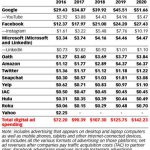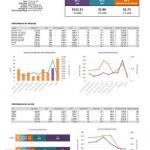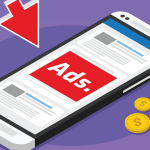How NRA Advertising Changed The Second Amendment–And American Gun Culture
The day after Stephen Paddock killed 58 people, and injured almost 500 others in Las Vegas, news emerged that the National Rifle Association had postponed a political ad buy in Virginia, meant to help sway voters in that state’s governor’s race. This response seems to mirror how they responded to previous tragedies–stay very quiet.
But only temporarily. Because, if the aggressive tone of its most recent ad campaign is any indication, the Las Vegas shootings won’t keep the organization quiet for very long. On Thursday, NRA CEO Wayne LaPierre appeared on Sean Hannity’s Fox News show to blame the organization’s opponents for politicizing the tragedy.
“This Hollywood crowd makes billions a year, every single day, teaching gun irresponsibility to the American public,” said LaPierre. “The hypocrisy is beyond belief. They criticize me for saying people ought to be able to protect themselves from murders, rapists, and robbers, and then they make billions depicting every night those same situations. The hypocrisy coming out of Hollywood is beyond belief. The American public doesn’t buy into it.”
A week after the mass shooting in Sandy Hook, in which 20 children and six adults were killed in an elementary school Newtown, Connecticut, LaPierre sent a series of e-mails to members warning them that anti-gun forces were going to use it to “ban your guns” and “destroy the Second Amendment.” He also held a news conference in which he said, once again, that the media, movies, and video games were more to blame for the violence than guns.
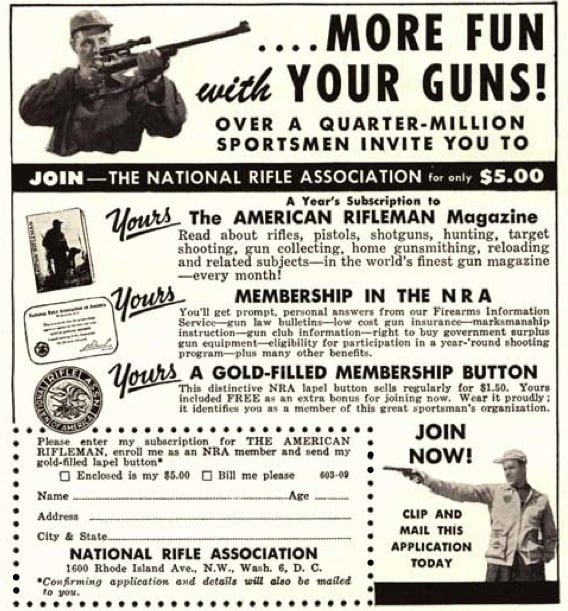
Over the last 40 years, the NRA has transformed itself from a largely non-political organization into one of the most powerful in Washington, D.C. And the bulk of its influence isn’t financial. As James Surowiecki wrote in The New Yorker in 2015, the NRA’s annual lobbying budget is around $3 million, or about a 15th of what the National Association of Realtors spends. The N.R.A.’s biggest asset is actually the voice of its members. UCLA law professor Adam Winkler told Surowiecki, “N.R.A. members are politically engaged and politically active. They call and write elected officials, they show up to vote, and they vote based on the gun issue.”
To mobilize that passionate membership, over the last four decades, the NRA has used its advertising to change how many Americans see the Second Amendment–from a militia-based policy to one intently focused on individual gun ownership–and a relentlessly aggressive message that American gun rights are under threat. Behind every ad is one ad agency, Oklahoma City’s Ackerman McQueen, which over the last few decades has entrenched itself within the organization, and provided the public face and message of the NRA, one that aligns perfectly with President Trump and his voter’s brand of patriotism. This excellent 2013 Washington Post feature examined some of the dark arts of advertising involved in the relationship between the agency and the NRA.
Recently, an NRA ad featuring conservative TV personality host Dana Loesch launched a storm across social media, with many opponents accusing the organization of provoking fear, and even violence.
Hard to believe it’s from the same organization that helped draft the first federal gun controls in 1934’s National Firearms Act, and 1938’s Gun Control Act. That spot is from a year-long campaign called “Freedom’s Safest Place,” that included a repositioning of the brand’s video content as “NRA TV.” It’s a strategy that positions the organization as an alternative news outlet in a time of growing mistrust of mainstream media news sources, particularly among the NRA’s base.
To get a sense of how we got here, let’s take a look back at the NRA’s evolution through 40 years of advertising.
In 1977, a group of conservative libertarians, led by Harlon Carter, took over the leadership of the NRA, and began publicizing the threat to gun rights by focusing on hunters. They favored an interpretation of the Second Amendment that emphasized individual, not just militia, rights to bear arms. It’s a view that well-known conservative, former U.S. Supreme Court Chief Justice Warren Burger called “one of the greatest pieces of fraud—I repeat the word ‘fraud’—on the American public by special interest groups that I have ever seen in my lifetime,” in a 1991 interview.
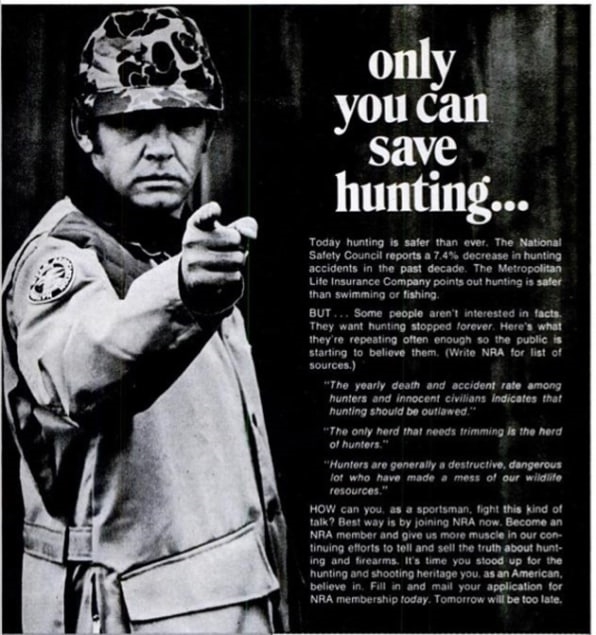
The early 1980s saw the organization move to expand its membership by touting its diversity, the ads featured celebrities, kids, and people of various ethnicities under the banner “I’m the NRA.”
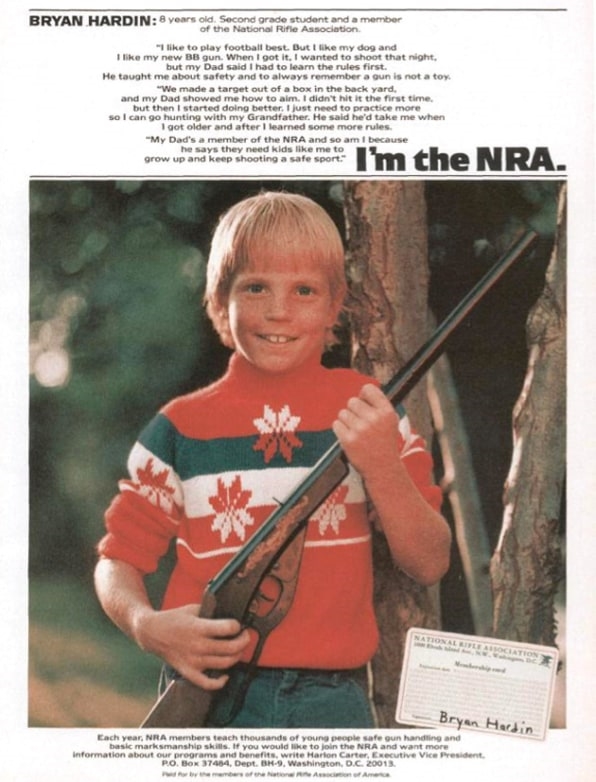
In 1987, the NRA launched its first campaign focused on crime, using the same fear-mongering tone that the Republican Party used to help George H.W. Bush defeat Michael Dukakis with ads like “Willie Horton.” Here are a few of the headlines featured in the NRA’s print ads at that time:
“Should you shoot a rapist before he cuts your throat?”
“If you’re attacked on your porch, do you want your neighbors to be opposed to gun ownership or members of the NRA?”
“Why can’t a policeman be there when you need him? . . . If police can’t protect you, who will?”
Even at the time, The Washington Post called the ads, “madly twisted.”
In the early 90s, the NRA evolved its Us vs. Them theme, portraying the government as a 1984-like threat to individual freedoms. During the 1992 election, Bill Clinton campaigned against George H.W. Bush by pushing both the Brady Bill, which tightened restrictions on handgun sales, and a national ban on assault rifles. The NRA reacted by warning against an encroaching police state.
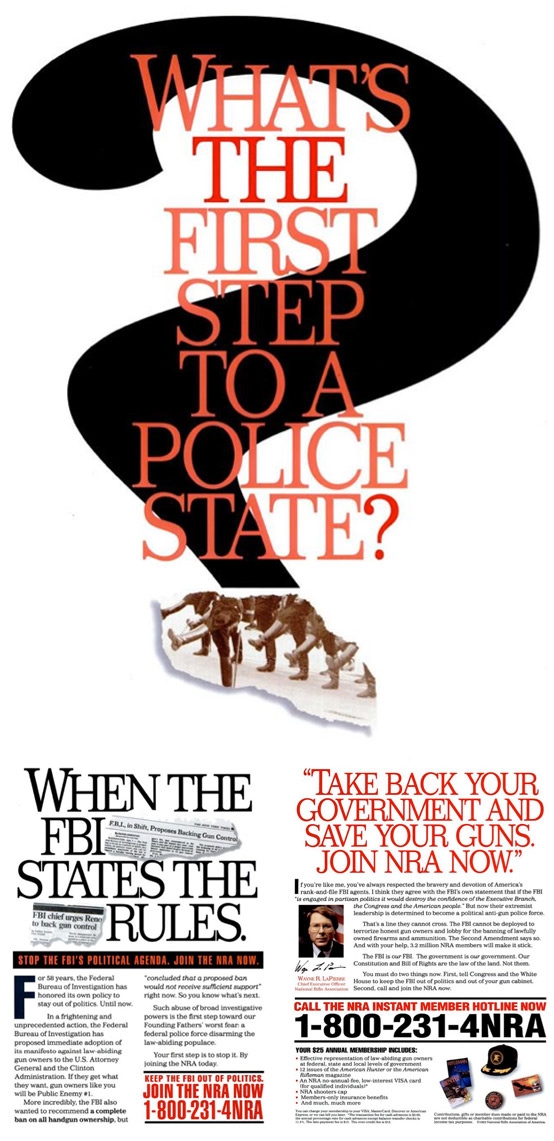
The organization was soon personally targeting Clinton, calling out the President’s supposedly soft views and voting record on guns.
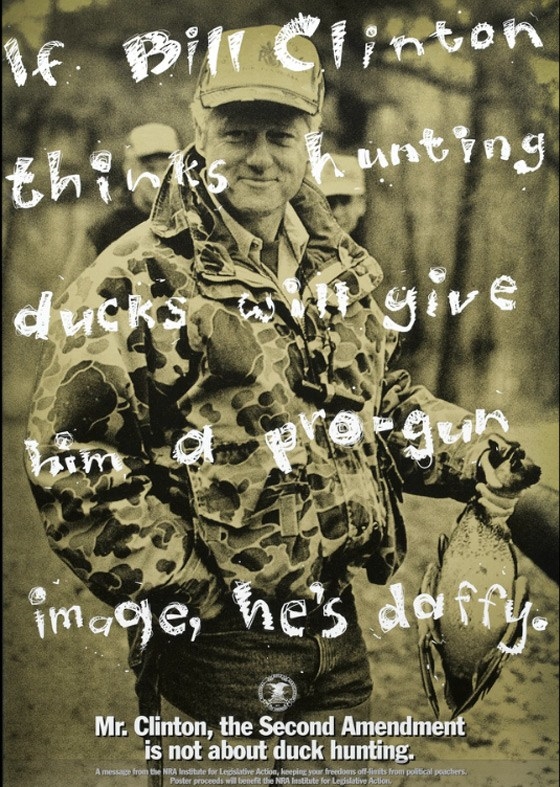
By 1997, Charlton Heston was leading the charge in positioning the government as a grave threat to Second Amendment.
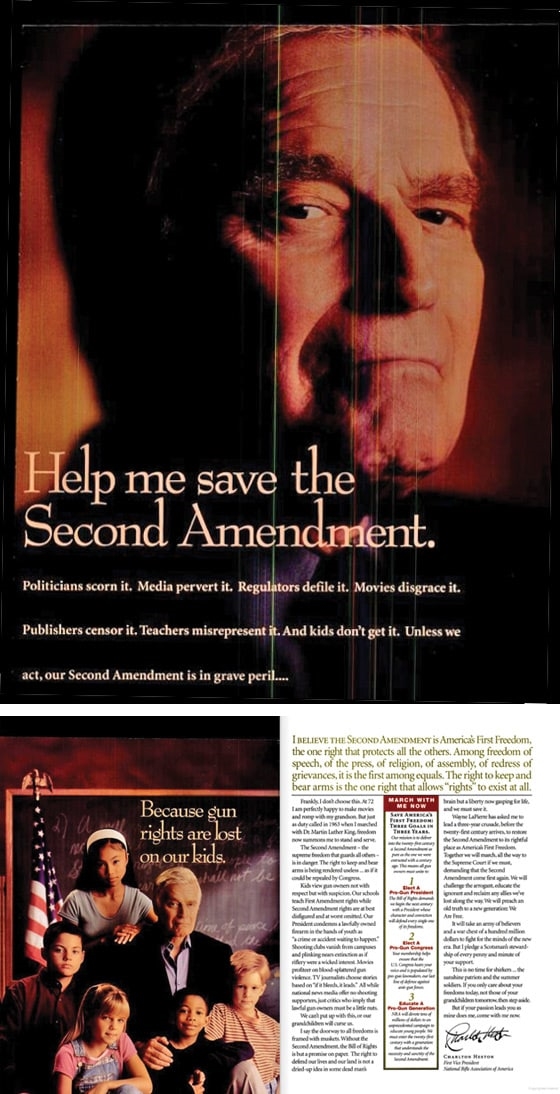
Fast-forward to the year after Sandy Hook, as President Obama introduced proposals looking to ban automatic weapons, limit magazines to 10 bullets, have universal background checks for all firearms buyers, and increase scrutiny of mental health patients, the NRA’s LaPierre said to get ready for the “fight of the century.” Part of that was this 2013 ad, which led many to accuse the NRA of unjustly bringing President Obama’s kids into the fight. White House spokesperson Jay Carney called the spot “repugnant and cowardly.”
By March 2016, just a couple of months before the organization would officially endorse presidential candidate Donald Trump, it went into full Make America Great Again mode with its new “Freedom’s Safest Place” campaign. This spot stars musician Charlie Daniels telling the “ayatollahs in Iran” that they haven’t met the real America yet.
Soon after, the campaign trained its sights on Hillary Clinton with this spot starring Mark Geist, the security team member who served in Benghazi and later wrote 13 Hours, criticizing Secretary Clinton’s record.
As the election drew near, in September 2016, the NRA once again aimed its ire at Hillary Clinton.
More recently, as protests erupted across the country against police brutality and discrimination, the NRA has scolded those who dare criticize law enforcement.
In this spot, which aired in late September, a Navy SEAL vet wades into the NFL player protests debate. The ad isn’t specifically about guns at all, instead it positions the kneeling issue as being anti-military.
And today we have NRA TV. The branded content channel features 34 different series, with hosts who engage in political, social, and cultural debate. There are talk radio-style shows, reality format series that profile people who “don’t seek the spotlight, but deserve it,” and Armed & Fabulous, featuring members of the NRA’s Women’s Leadership Forum.
This latest iteration of NRA advertising sees it join the likes of Fox News and Breitbart, positioning itself as both a source of news and entertainment that aligns and advances its outlook and agenda. A place to present its views as fact, and any opposition as #fakenews.
In addition to LaPierre’s appearance on Hannity, the NRA’s chief lobbyist Chris Cox also issued a statement on Thursday. It included the oft-repeated mantra around gun control’s lack of proven efficacy. “Banning guns from law-abiding Americans based on the criminal act of a madman will do nothing to prevent future attacks. This is a fact that has been proven time and again in countries across the world.”
Obviously he forgot about Australia, which passed much stricter gun laws after a 1996 mass shooting that killed 35 people and injured 23. Since then, the number of shootings in which five or more people were killed went from 13 in the 18-year period before 1996 to zero. Between 1995 and 2006, gun-related homicides dropped by 59% and gun-related suicides were down by 65%.
And as John Oliver pointed out in his popular take on the NRA’s power last year, the organization’s control over the U.S. government’s lack of actual research–like it’s influence over the Dickey Amendment, which ordered the Centers for Disease Control and Prevention never to fund research that could be seen as advocacy for gun control–is intrinsic to successfully disputing opponents, and serving up its millions of members with its own version of fact.
NRA TV’s motto is “The Truth Is Under Fire.” And, it seems, they’re the ones pulling the trigger.
Fast Company , Read Full Story
(70)



